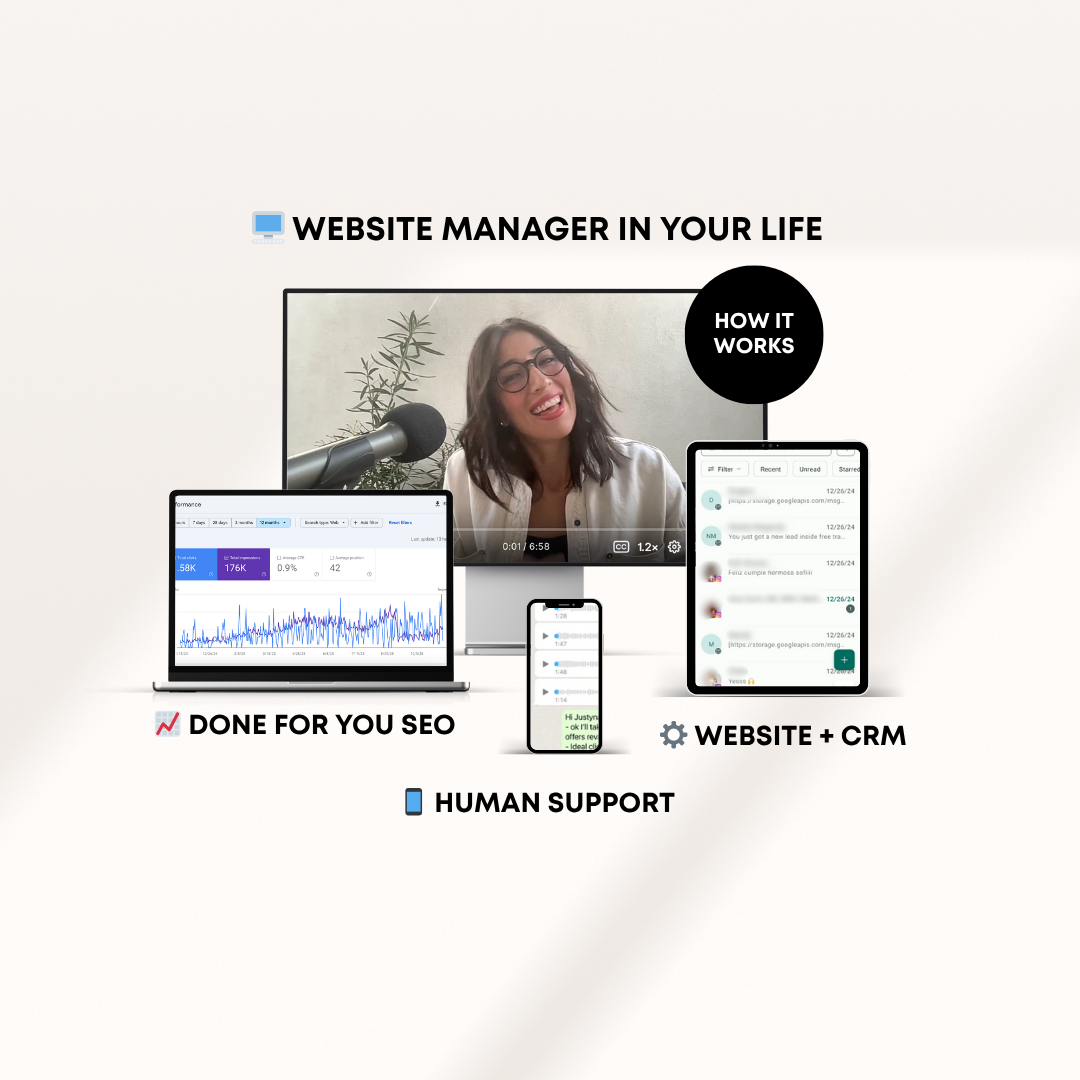The therapist chair: how the right seat can reshape your space and your practice
It always starts with the chair.
The client enters—anxious, quiet, unsure. And the first thing they do? Look around for where to sit. Where they’ll cry. Pause. Process. Heal.
What if the chair you chose wasn’t just another item in your room... but the first invitation to safety?
We’re more aware than ever that our environment influences nervous system regulation. That means the objects in our office—especially the seating—carry more weight than we often realize. And for therapists looking to update their practice, a good chair is one of the simplest yet most impactful places to start.
This guide is more than a list of products. It’s about helping you choose the right chair for your practice—not just by style or function, but by how it feels. How it speaks. And how it holds the emotional weight of the work you do every day.
In case we haven’t met yet, I’m Natalia, a website designer for therapists and practitioners. I help private practice owners like you amplify their magic, gain visibility, and simplify their marketing efforts through strategic web design and SEO content. Just like choosing the right chair for your space, I believe your website should feel like a home for your practice—one that reflects your values and welcomes clients in with clarity and warmth.
Why the right chair shapes the way healing begins
It’s not just a chair. It’s a signal.
Before a client says a word, they’re scanning the room for safety. Where they sit—and what that chair communicates—impacts how open they feel. A rigid, sterile seat can reinforce distance. A plush, grounded chair invites presence. The therapist chair isn’t just furniture—it’s the first impression.
Therapists deserve support, too
Most therapists spend hours sitting, often holding complex emotions in stillness. A chair that supports your body helps you stay present without strain. Think lumbar support, breathable fabrics, and posture-aligned design. Your well-being is just as essential as your client’s.
What therapists are really searching for
Comfort without losing professionalism
You want a chair that’s warm, but not too casual. Professional, but not cold. That in-between space is where therapeutic presence thrives. Most templates or roundups miss that nuance—they offer what’s trendy, not what’s truly effective.
Function that supports the emotional container
The therapeutic relationship lives in the details. A squeaky chair, a rough fabric, or even an awkward seat height can disrupt presence. Your chair should match your clinical intention—whether that’s spacious and open for trauma work, or firm and upright for structured modalities.
10 therapist chairs that bring warmth, professionalism, and presence
Each of these chairs was chosen with therapeutic work in mind. From design to color to comfort, they support both client and clinician in creating a safe, grounded space.
1. Velvet accent therapy chair – modern & cozy
buy now → View on Amazon
A low-profile, velvet accent chair that’s both structured and soft. This piece makes a statement without overpowering your space.
- Price: $159.99
- Colors: Beige, green, pink
- Why it works: Muted tones, cozy texture, and a design that feels inviting for clients navigating anxiety or trauma.
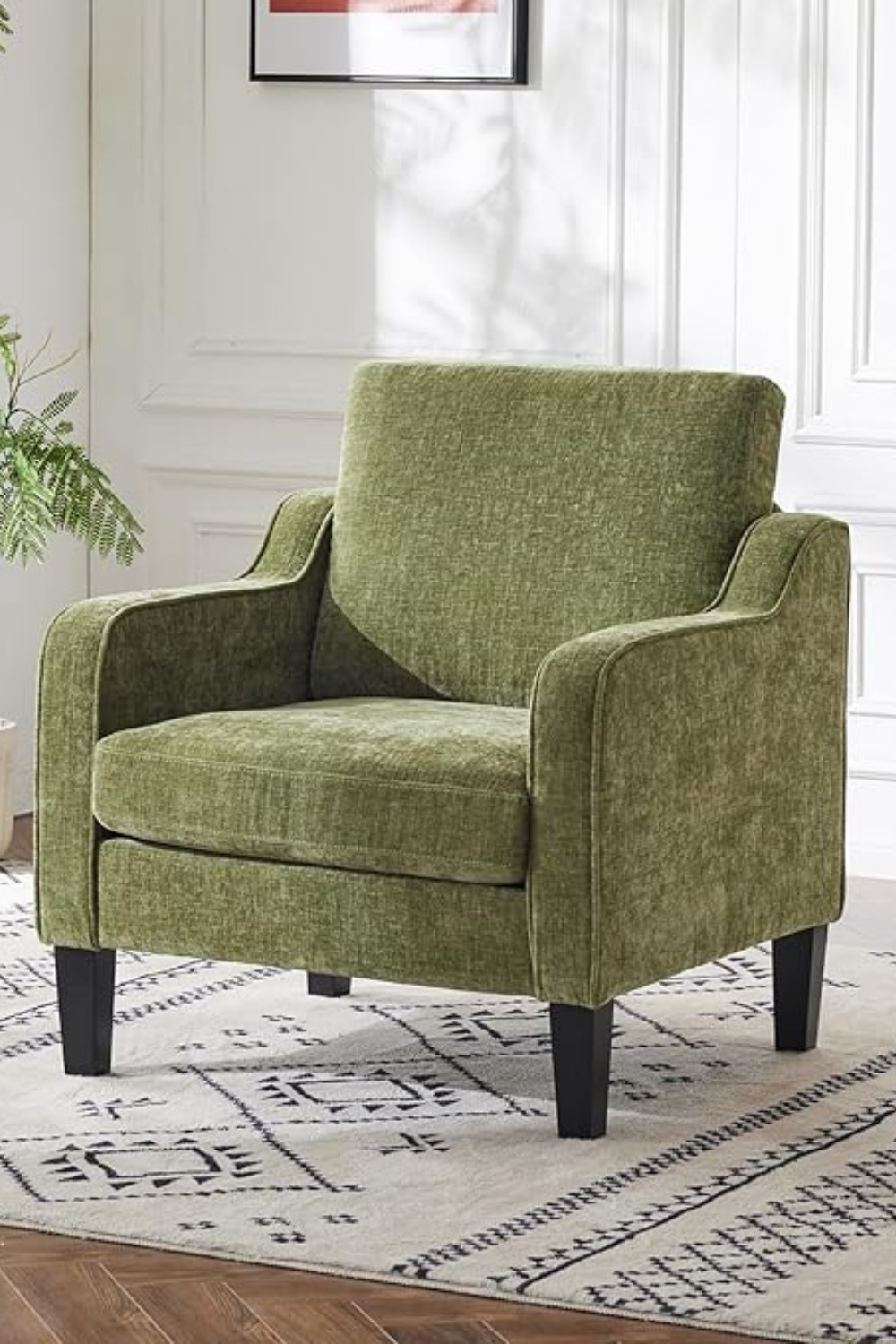
2. PayLessHere adjustable office chair
buy now → View on Amazon
An ergonomic option for the therapist’s desk chair. Supports long hours and has a sleek, clinical look.
- Price: Around $39.99
- Why it works: Lumbar support and adjustability make it a solid option for therapists who take notes or conduct telehealth.
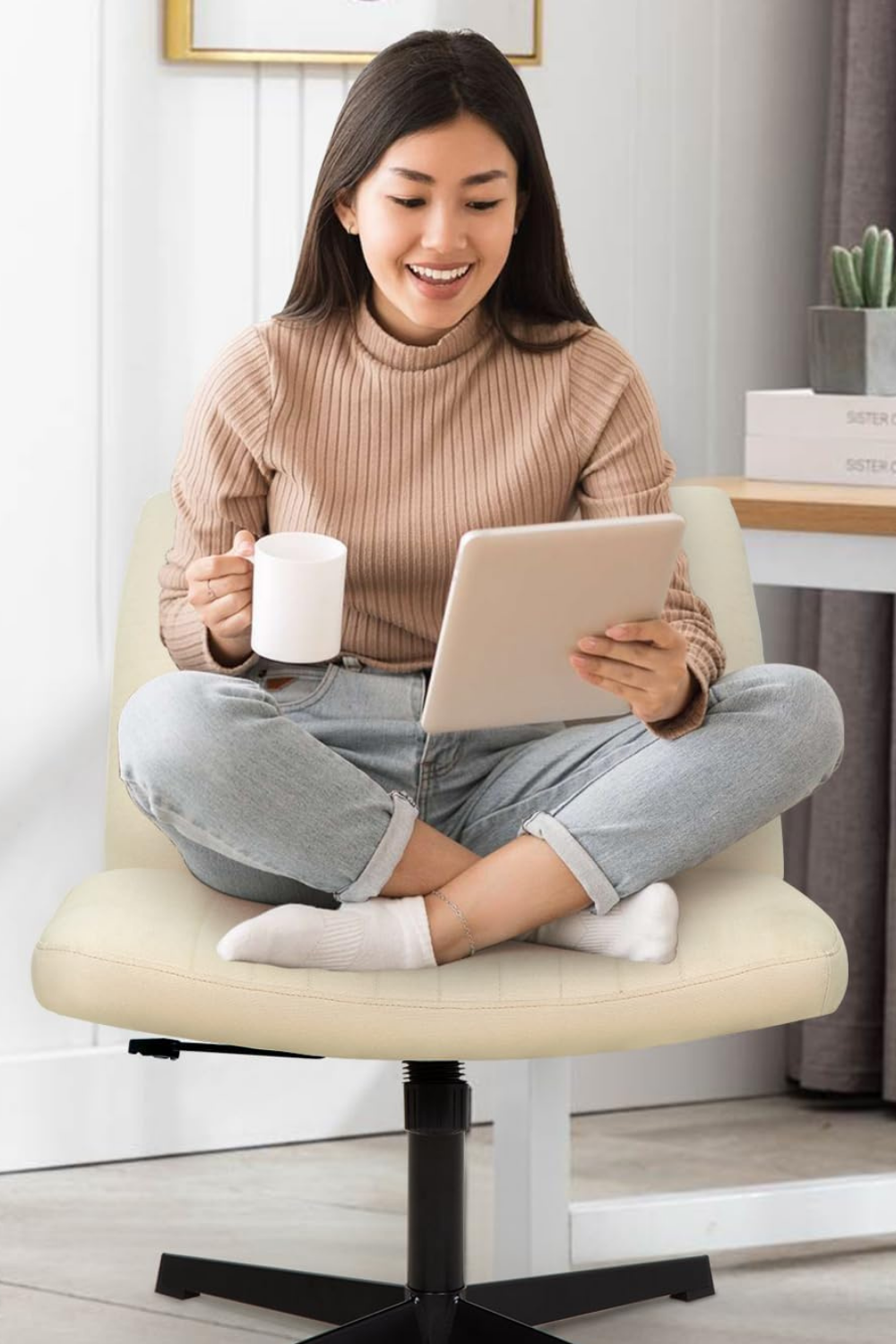
3. Mid-century upholstered accent chair
buy now → View on Amazon
Elegant and neutral, this chair fits beautifully into minimalist or mid-century inspired offices.
- Price: $168.99
- Why it works: The sloped back and soft seat create a relaxed presence without feeling too casual.
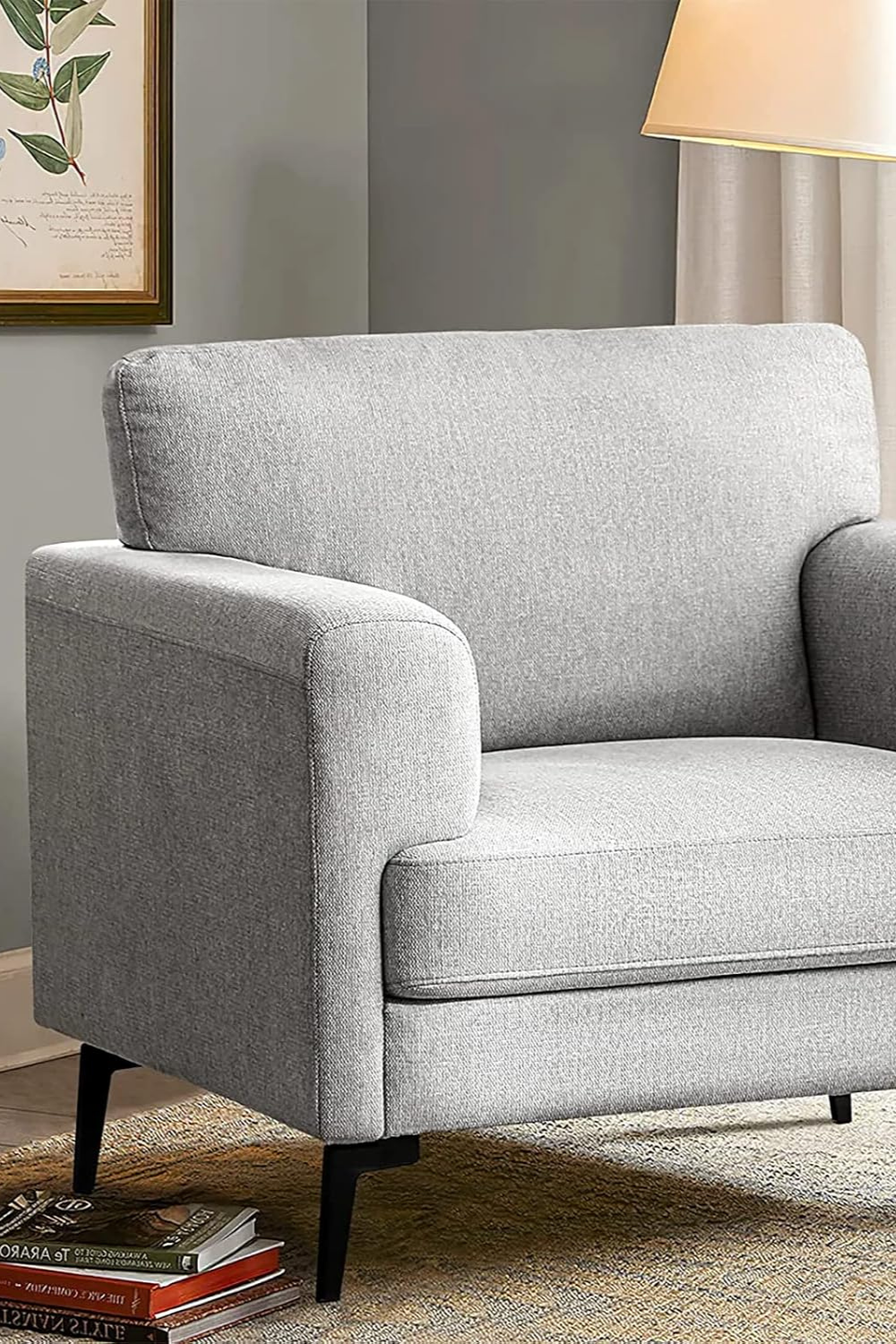
4. Ergonomic executive chair with faux leather
buy now → View on Amazon
A therapist’s chair option with comfort and authority. Ideal for practitioners who see high volumes of clients.
- Price: $229
- Why it works: This is a great match for structured modalities or trauma-informed therapists who also prioritize their posture.
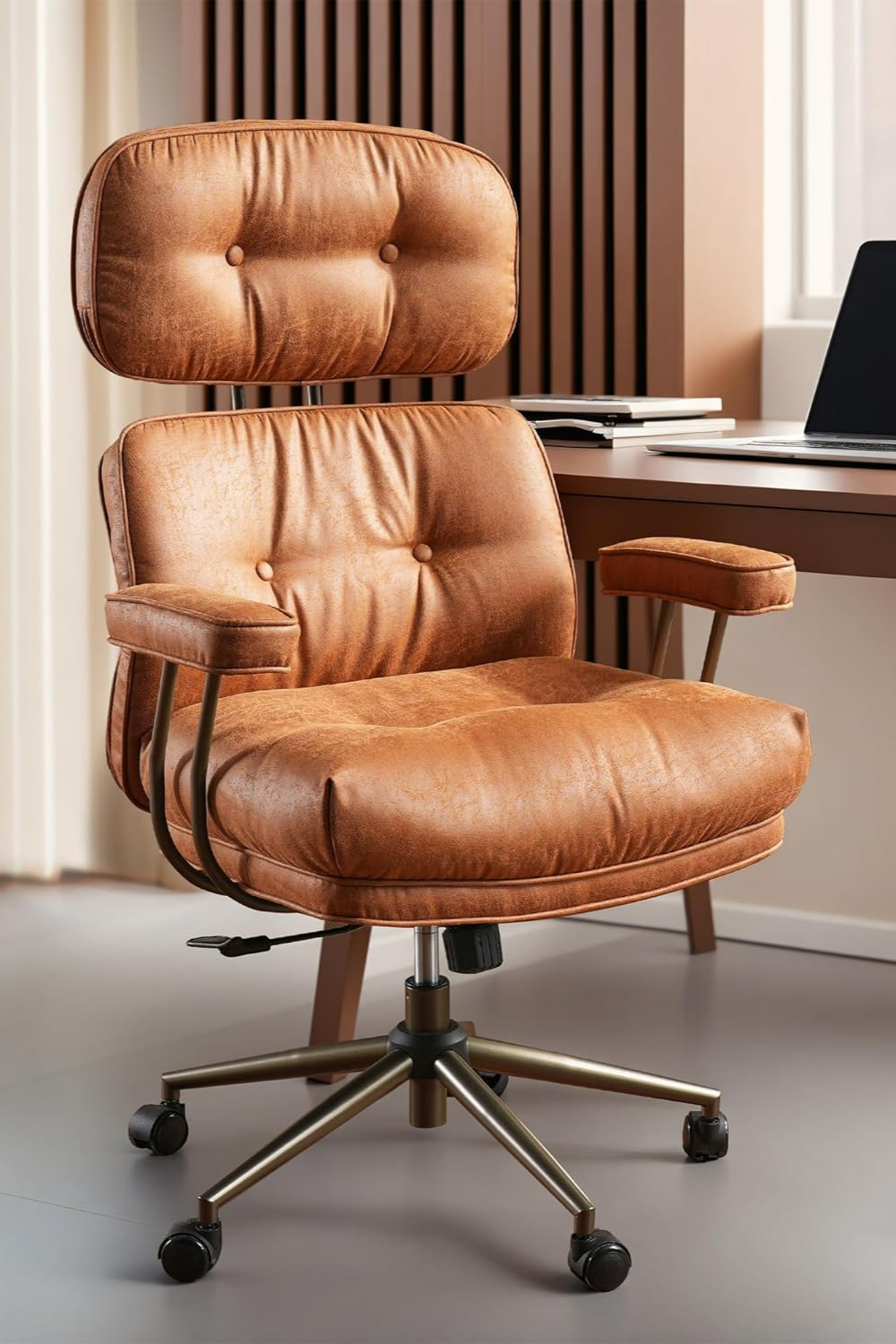
5. Okeysen upholstered accent chair
buy now → View on Amazon
A modern chair that brings comfort with a slightly playful edge.
- Price: $134.88
- Colors: Grey, rust, emerald
- Why it works: Perfect for therapists working with younger clients, creatives, or those integrating expressive modalities.
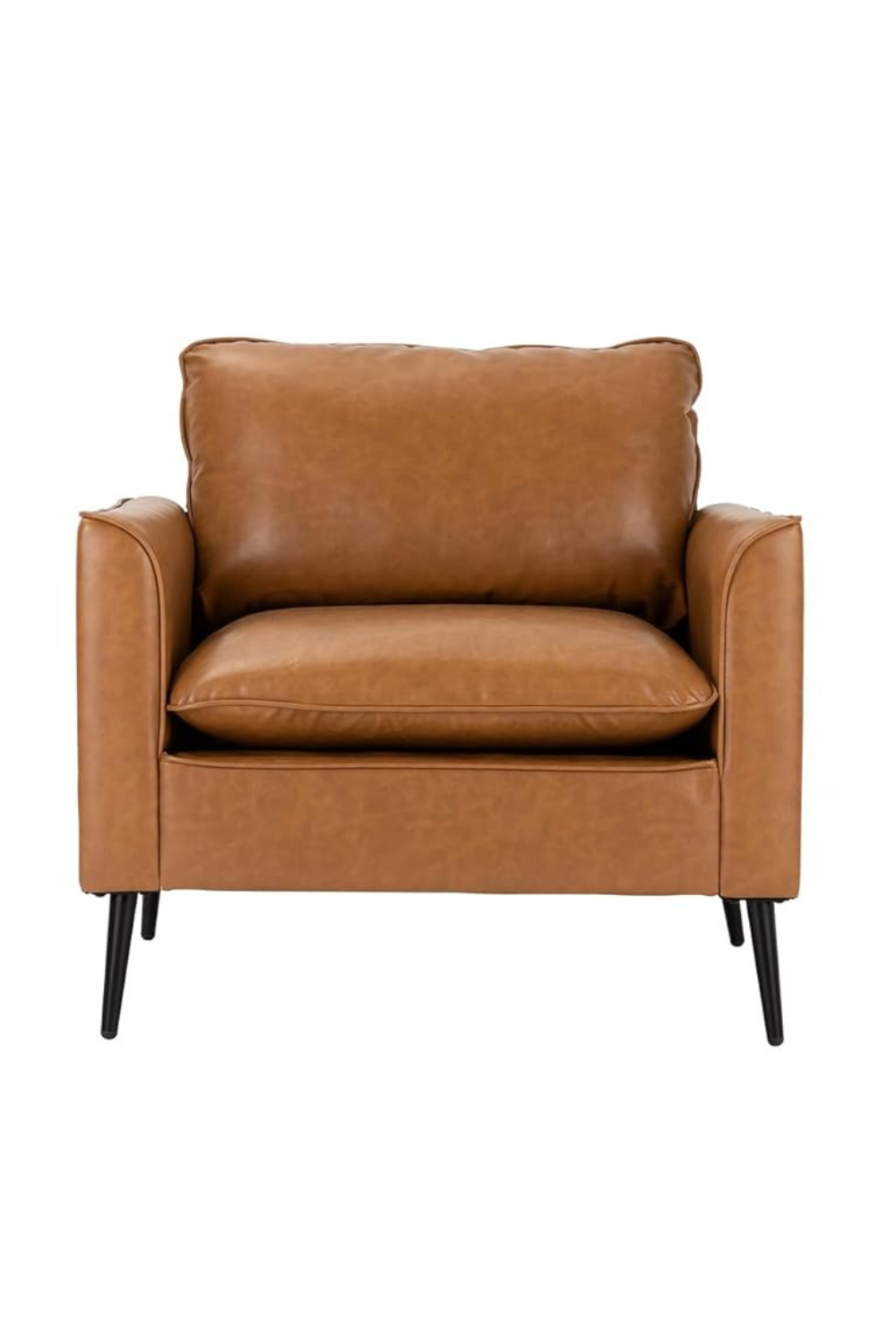
6. Ergalithic ergonomic chair with headrest
buy now → View on Amazon
This high-backed chair is designed for the therapist who needs ergonomic support and structure.
- Price: $169.99
- Colors: White beige, black, blue, black - gold, black - silver, gray, gray / gold, pink, white - orange.
- Why it works: Adjustable features and sleek lines make it ideal for telehealth and long in-person days.
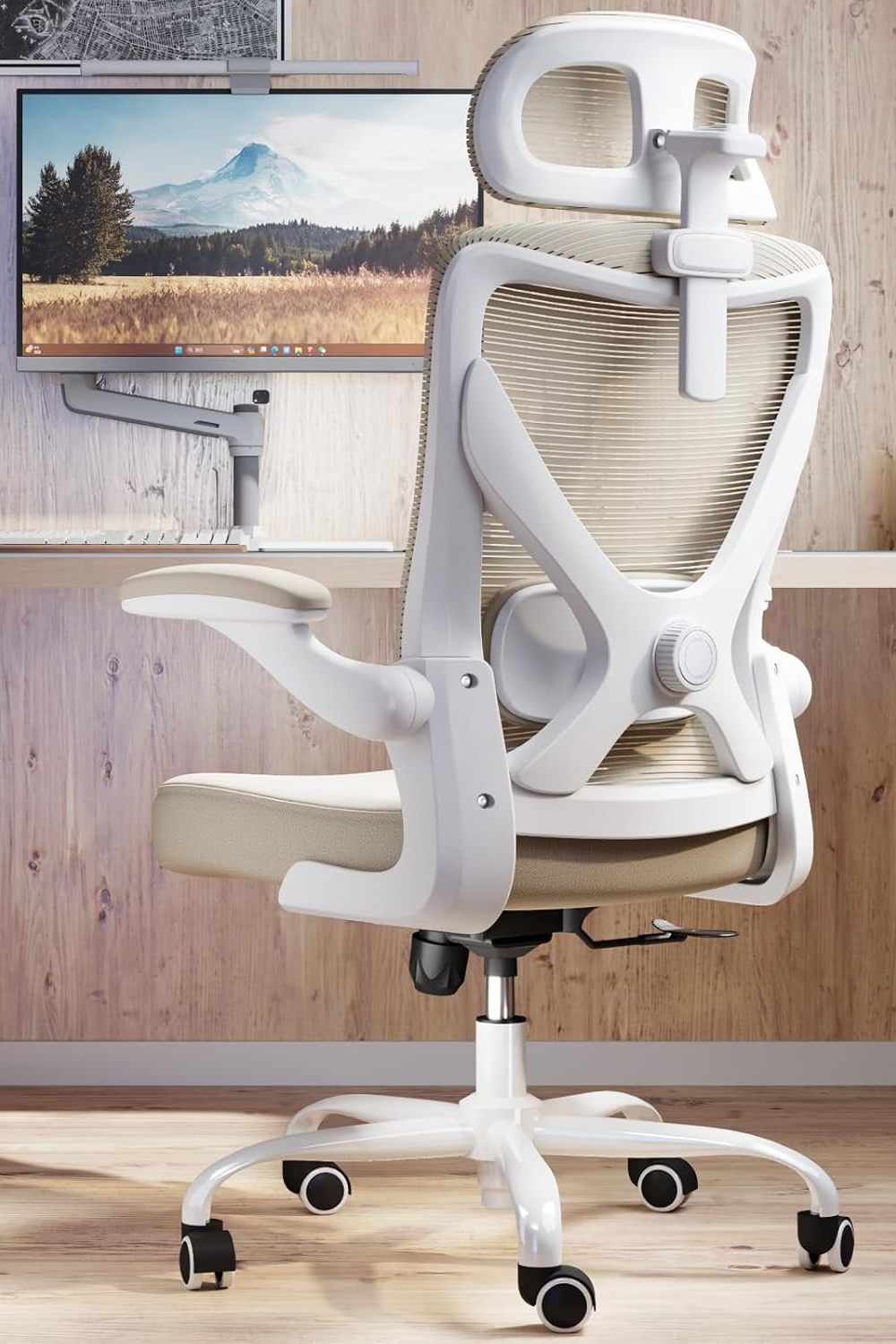
7. OFRQ0877 high-density foam chair
buy now → View on Amazon
A smaller footprint chair for compact therapy offices.
- Price: Around $179.99
- Colors: Brown, black, sage.
- Why it works: Firm but not rigid, offering a sense of groundedness without taking over the room.
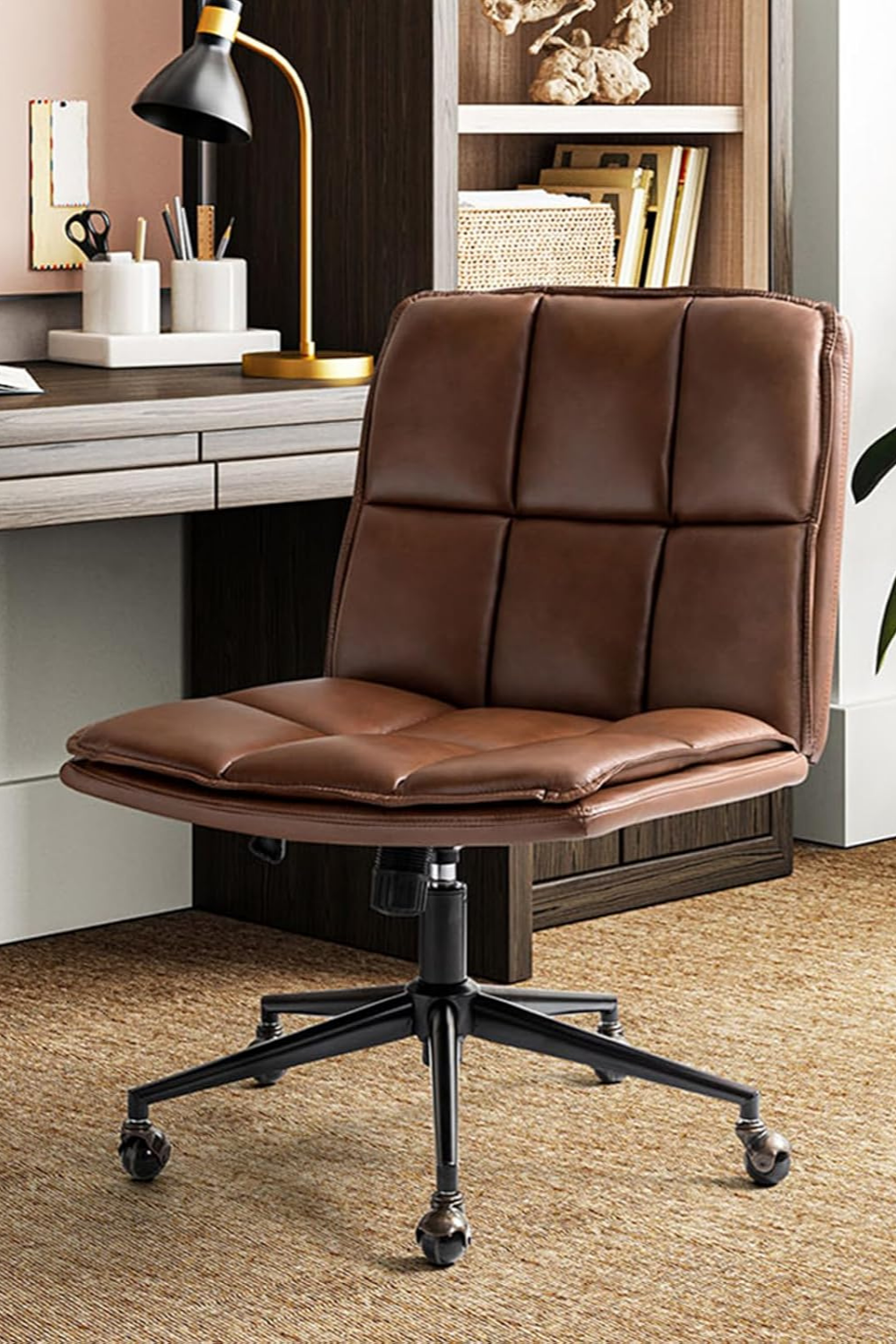
8. FDW ergonomic rolling therapist chair
buy now → View on Amazon
If you move around a lot in your space—or need mobility for assessments or body-based work—this is a reliable option.
- Price: $56.99
- Colors: Beige, blue, brown, dark black, grey, pink.
- Why it works: A rolling base and lightweight structure make this a practical and flexible choice.
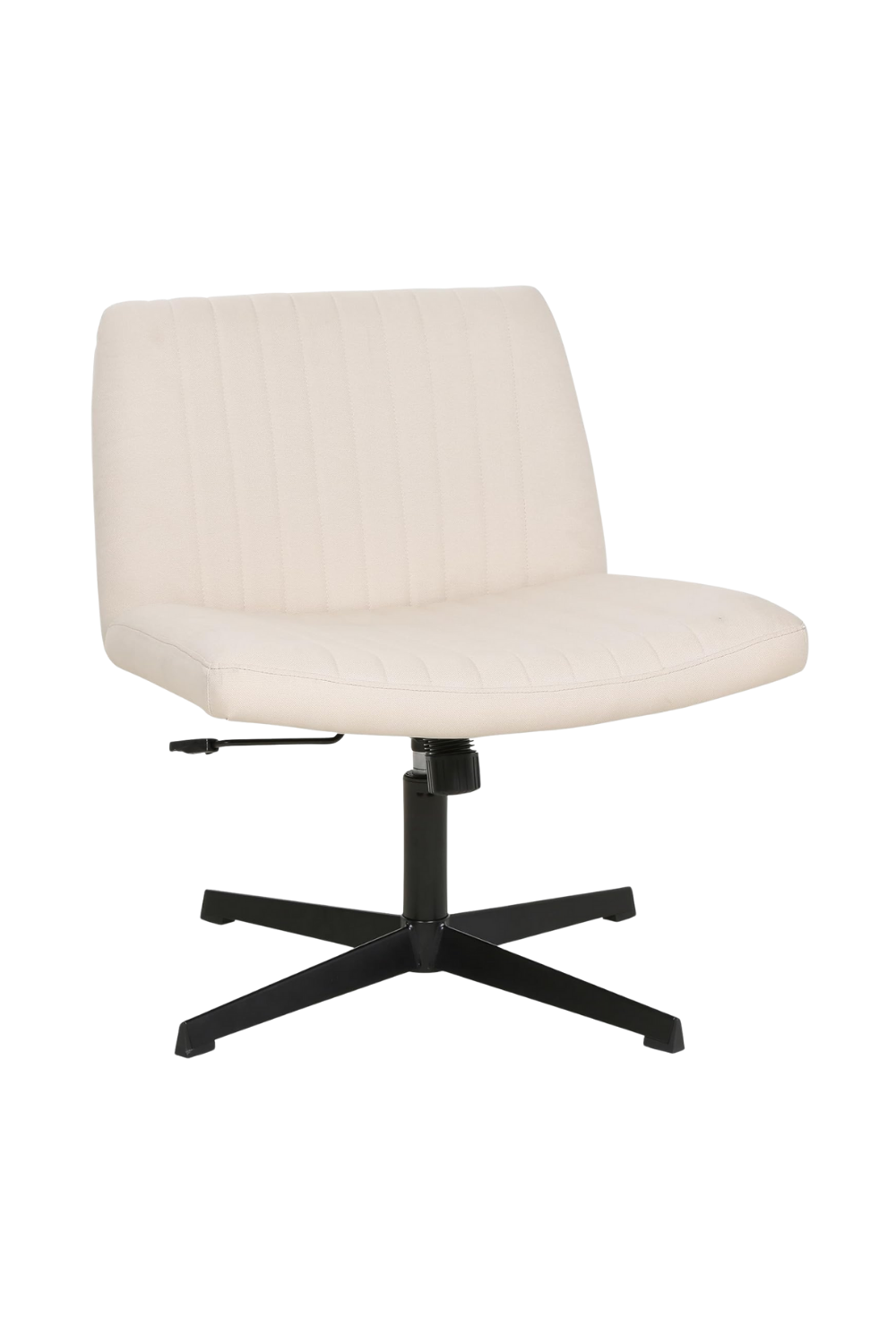
9. Acolchada mid-century tufted chair
buy now → View on Amazon
This design adds visual warmth to any room.
- Price: $134.99
- Colors: Green, beige, brown, camel, green matcha, white.
- Why it works: The tufted seat and back give a luxe feeling while maintaining a professional tone.
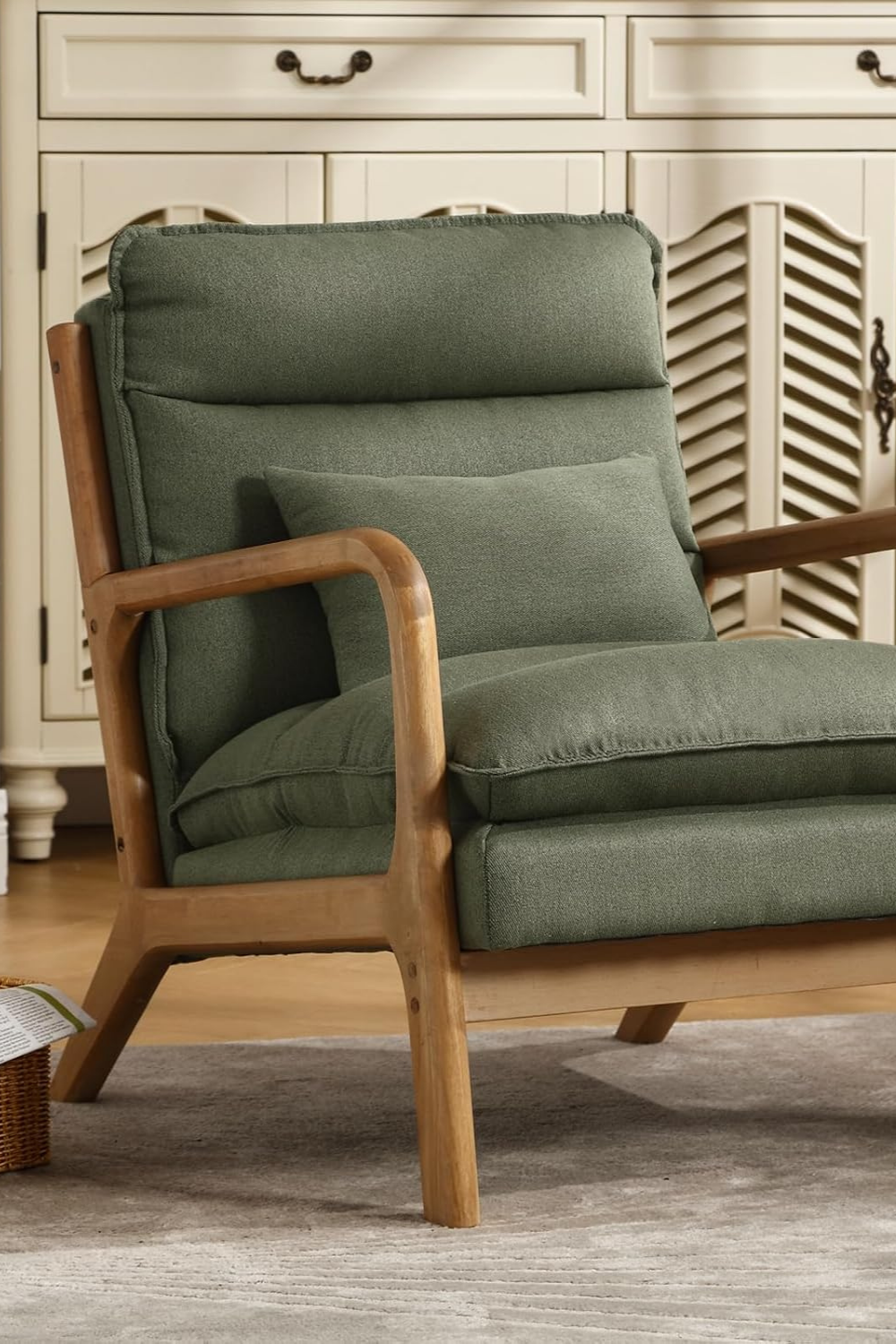
10. Yaheetech upholstered therapy chair
buy now → View on Amazon
A neutral classic with clean lines and soft upholstery.
- Price: Around $125
- Colors: Yellow, beige, brown, blue, grey.
- Why it works: It’s a great all-around chair—comfortable, supportive, and blends into almost any room style.
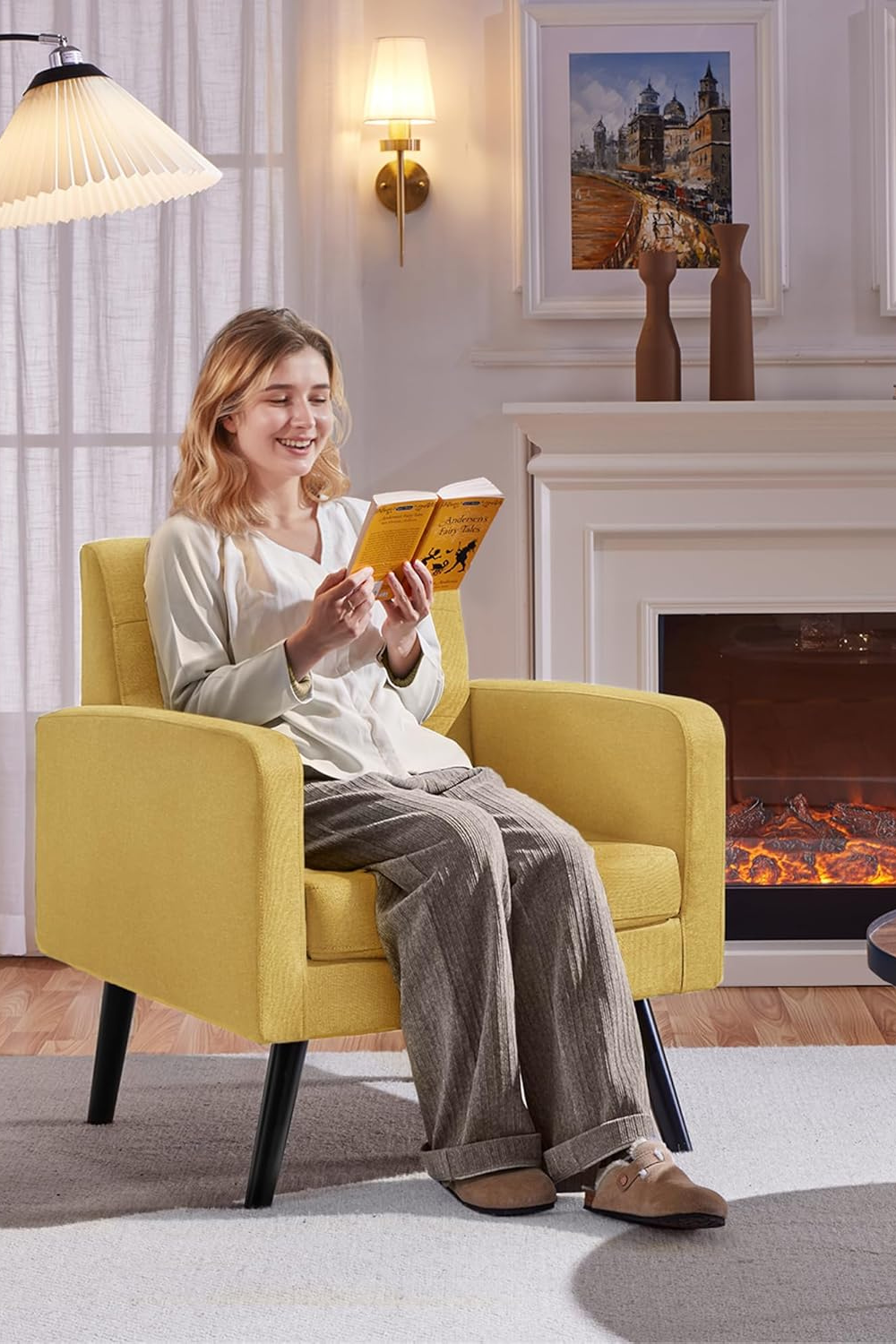
What are therapist chairs actually called?
Therapist chairs don’t have one universal name—but they serve very distinct roles depending on the person using them. The nuance lies in who the chair is for and how it’s used.
- The therapist’s chair is often referred to as a
task chair or
ergonomic office chair, designed for support through long sessions, documentation, and presence.
- The client’s chair is more often called an
accent chair,
armchair, or
therapy chair—but labels are flexible. The right chair is one that feels inviting and safe for the emotional work about to unfold.
The truth is, it’s less about what they’re called and more about how they function. The best therapist chairs, regardless of title, say: “you are welcome here, just as you are.”
Are cuddle chairs good for therapy?
Cuddle chairs—those wide, plush seats often called “chair-and-a-halves”—can be surprisingly useful in therapy spaces, but they’re not for every modality.
Imagine a child crawling into a cozy corner during a play session. A teenager fidgeting with a pillow while talking about their anxiety. A postpartum client holding their baby during a session. In these moments, the extra space in a cuddle chair creates freedom. It allows clients to self-regulate their posture and presence.
But they’re not ideal for everything. For trauma work, especially with new clients, too much physical closeness can feel overwhelming or boundary-blurring. The lack of structure might hinder clarity and groundedness in certain cognitive or somatic approaches.
So the question becomes:
Does this chair help your client feel held—or does it make the space feel less clear?
How to choose the best chair for your practice
There’s no perfect chair—but there is the perfect one for you.
Start here:
Consider your clinical style
Are you an expressive arts therapist who needs open movement? A psychodynamic therapist who wants to create a contained space? A somatic practitioner who guides clients to feel grounded in their body? The energy of your method should align with the energy of your seating.
Understand your client’s needs
A neurodivergent teen might benefit from soft textures and rocking motions. A trauma survivor might feel safer with arms and boundaries. A highly anxious client may want something low to the ground and deep to sink into.
Honor your body, too
If you’re sore, tense, or distracted by your own discomfort, it’s harder to stay fully present. Choose a chair that supports your spine, encourages upright energy, and gives you freedom to exhale.
Ready to design a space that reflects your values?
Your therapy space already speaks volumes—through the softness of your lighting, the grounding scent in the air, the intentional way you greet each client. The chair isn’t just for sitting. It’s part of the therapeutic experience. It’s an unspoken invitation to feel safe, supported, and seen.
Your website should feel the same.
If your office is designed with care, your online presence deserves the same kind of intentionality. A space that not only informs, but connects. That holds your voice, your values, and your vision for the people you serve.
This is where I come in. Let’s create a website that reflects the depth of your work—one that feels just as aligned as the room where healing happens.
Let’s design a digital space that feels as grounded, intentional, and heart-led as the room where you do your deepest work.
Explore my website design services for therapists →
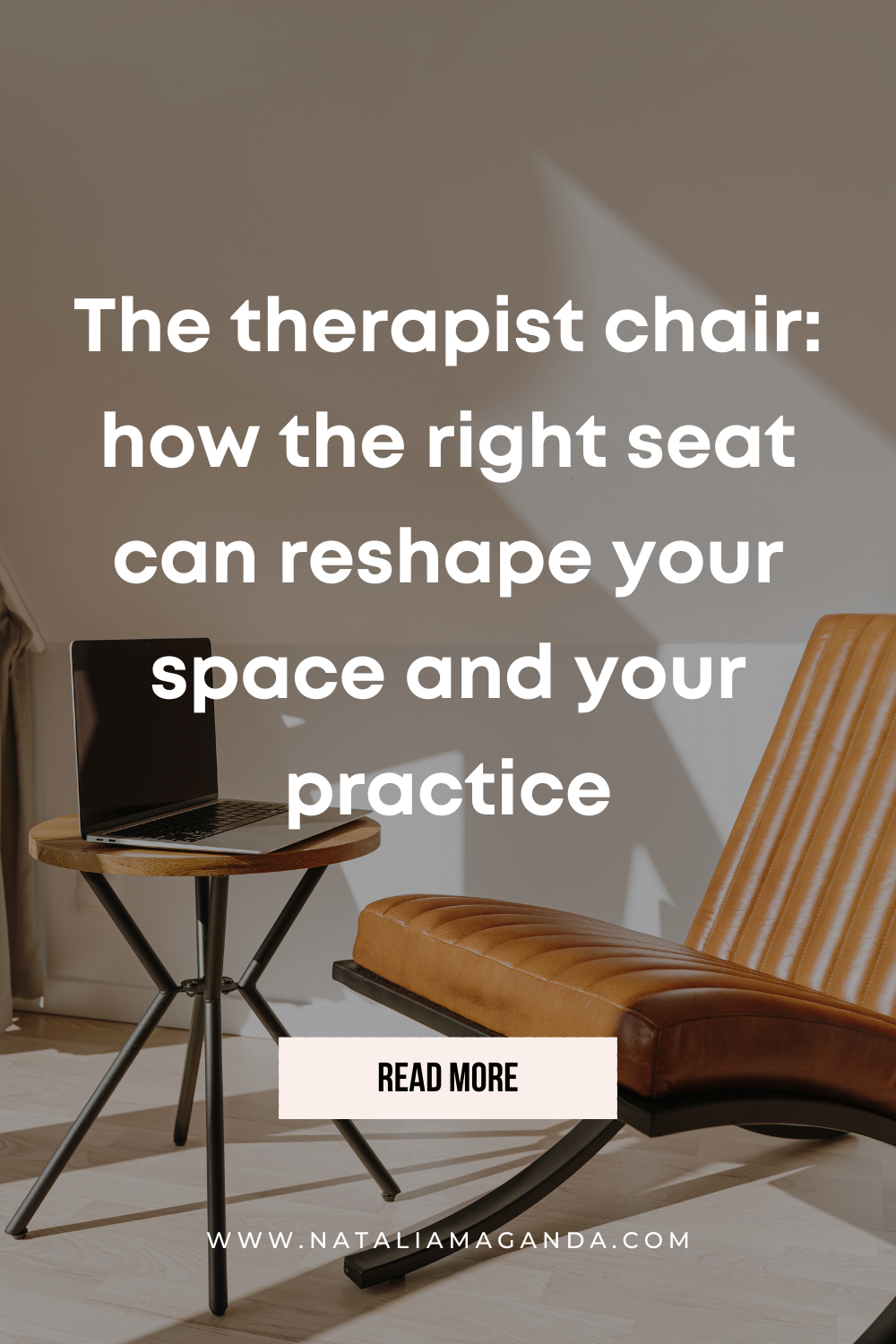
* AI Disclosure: This content may contain sections generated with AI with the purpose of providing you with condensed helpful and relevant content, however all personal opinions are 100% human made as well as the blog post structure, outline and key takeaways.
* Affiliate Disclosure: Some of the links on www.nataliamaganda.com may contain affiliate links meaning that I will get a commission for recommending products at no extra cost to you.

hello! i'm natalia
Latina, web design expert for mental health professionals.
I help ambitious life coaches, therapists and holistic leaders amplify their magic, gain visibility, and simplify their marketing efforts through strategic web design and content.
If you’re looking for an all-in-one system to manage your website, emails, funnels, and CRM, Go HighLevel (affiliate link) is the most powerful tool I’ve tested—and it’s built to grow with you.
On a tighter budget or just starting out? ThriveCart (affiliate link) offers a one-time payment option and easy checkout setups that still pack a punch for digital offers and automation. (Send me an email after your purchase and make sure to use my affiliate link)



